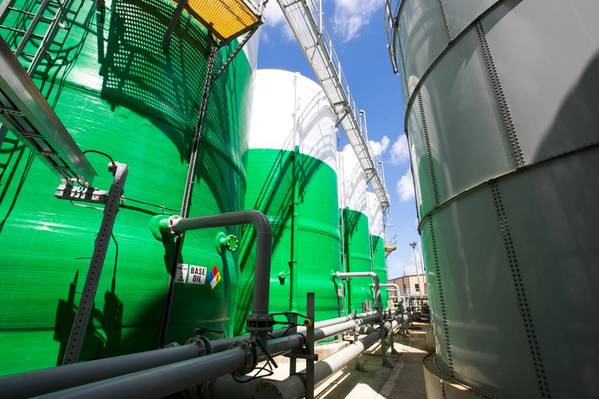
The success of a drilling operation hinges upon finding the right solutions for a specific site. As fluids have different base liquids, chemical additives and diverse physical characteristics, they can behave differently in varying environments. Those differences can make it difficult to determine the best steps to optimize production. In order to build a successful fluids portfolio, including drilling, completion and stimulation solutions, operators must make several important considerations along the way.
1.Utilize a Bottom-Up Strategy
Production engineers typically approach well drilling from a top-down perspective. This method requires them to set objectives around the desired total depth, pay zone and target with less regard for the size of the hole. However, considerations around the size and formation of the hole are essential to maximizing the performance of the well. In fact, designing the well from the bottom-up can be a more successful strategy by bringing greater focus to these important factors.
For example, the top-down approach often siloes considerations for drilling, completion and stimulation—causing engineers to miss opportunities for enhancing performance. However, the bottom-up approach defaults engineers to working more holistically, improving the harmony and efficiency of fluids solutions utilized at different stages. Consider that completions can require cations of certain diameters for optimal formation-stabilization performance. Though this is a less critical consideration for drilling and stimulation fluids, the whole portfolio can be designed with these needs in mind to maximize product applicability. Overall, a well designed from the bottom-up optimizes hole size for maximum output while minimizing formation damage with more ideal fluids solutions.
Taking the bottom-up approach will also enable a better understanding of what tools are necessary for greater productivity out of the gate. By following this strategy, drilling operators can maximize the return on their investment and profitability in a time-sensitive manner.
2.Understand Formulation Nuances & the Environment
Drilling, completion and stimulation fluid operations each present a unique set of challenges and requirements to fulfill during production. Careful consideration must be given to how each fluid will perform with one another—especially amid the given formation. Government regulations to minimize environmental impact of a drilling operation only heighten the importance of these factors.
For example, strict regulations designed to minimize carbon emissions are driving demand for water-based muds and synthetic-based muds. Land operations utilizing oil-based fluids in the United States are required to excrete zero discharge. There are also additional costs associated with fluids that produce regulated wastes and cuttings as byproduct. In fact, in certain circumstances, it’s not permissible to drill with oil-based fluid at all and therefore operators must exclusively use water-based fluids.
In the Gulf of Mexico, pure oil-based muds are prohibited, and synthetic-based fluids are only permitted within certain parameters. With deepwater operations, the formations are younger and can be highly reactive in nature. Therefore, an operator may elect to use synthetic-based mud, which offers more stability. Future regulations will likely become more stringent and companies must look to optimize fluid solutions and be overly mindful of the environment to stay ahead of the curve.
3.Integrate Digitization
Digitalization has the potential to create around $1 trillion for firms in the industry. In today’s market, it is critical to implement proven technology, such as a drilling simulator, that studies the effects of fluid formations within predetermined temperature and pressure environments.
As another example, the use of hydraulic modeling software can remove much of the guess-work around assessing the potential impact and efficiency of the fluids solutions for a well in planning stages. The software predicts how a fluid will perform in cavernous depths of the environment and delivers ways to optimize it for increased efficiency, speed and performance. Hydraulics analysis influences critical decision making and bolsters confidence on both fluids and well design. The right partner working with the right software can enable up to 99.5% accuracy in its predictions and speed the assessment periods to weeks or months rather than months or even years.
Looking toward the future, digitalization and the capturing and sharing of data must be at the forefront of the oil and gas industry’s practices. Oilfield companies must also continue to advance and evolve to meet demand while being as economical as possible.
Find a Trusted Partner
Working with one solution provider is oftentimes the best strategy for achieving greater overall efficiency. Doing so ensures a seamless transition of learnings across functions and departments and better performance and cooperation among drilling, completion and stimulation fluid chemistries in the field.
Working with a trusted supplier that implements a value-added, solutions-based approach will ensure the delivery of tailored solutions designed for overall safety, efficiency and cost-effectivity.
The Author
Timothy Armand is President, North America, Newpark Drilling Fluids.